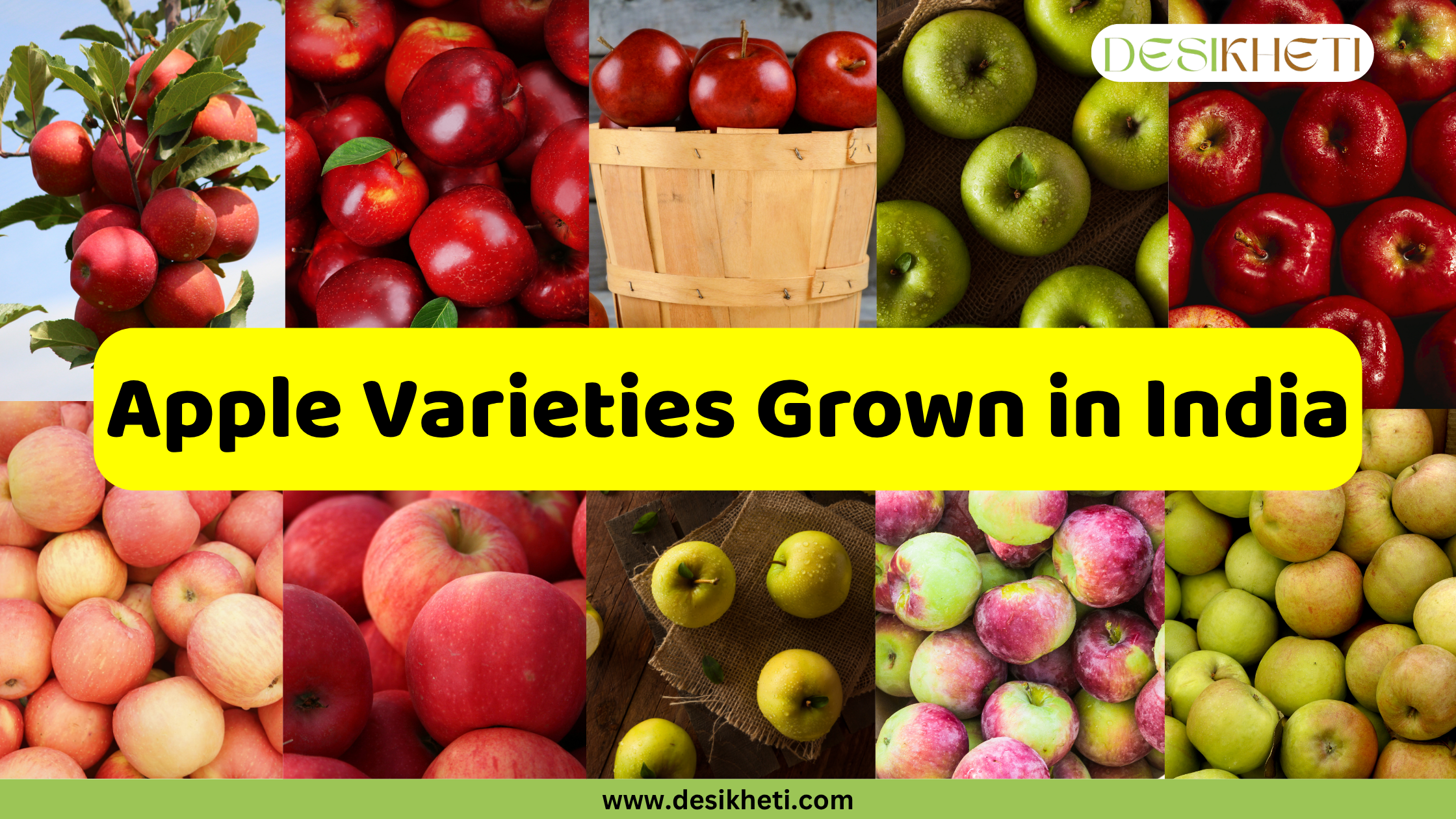Table of Contents
Introduction
Apples are among the most loved and nutritious fruits in India, cherished for their crisp texture, refreshing taste, and year-round availability in markets. Although traditionally associated with temperate climates, India successfully cultivates several apple varieties both indigenous and international in states like Himachal Pradesh, Jammu & Kashmir, and Uttarakhand.
From the sweet and fragrant Ambri Apple of Kashmir to the juicy Fuji and the tart Granny Smith, each variety offers a unique blend of flavor, color, and health benefits. In this article, we present a curated list of 10 Popular Apple varietues. Whether you’re a fruit lover, farmer, or gardener, this guide will help you discover the best apples suited for your plate or orchard.
10 Popular Apple Varieties
Kashmir Apple
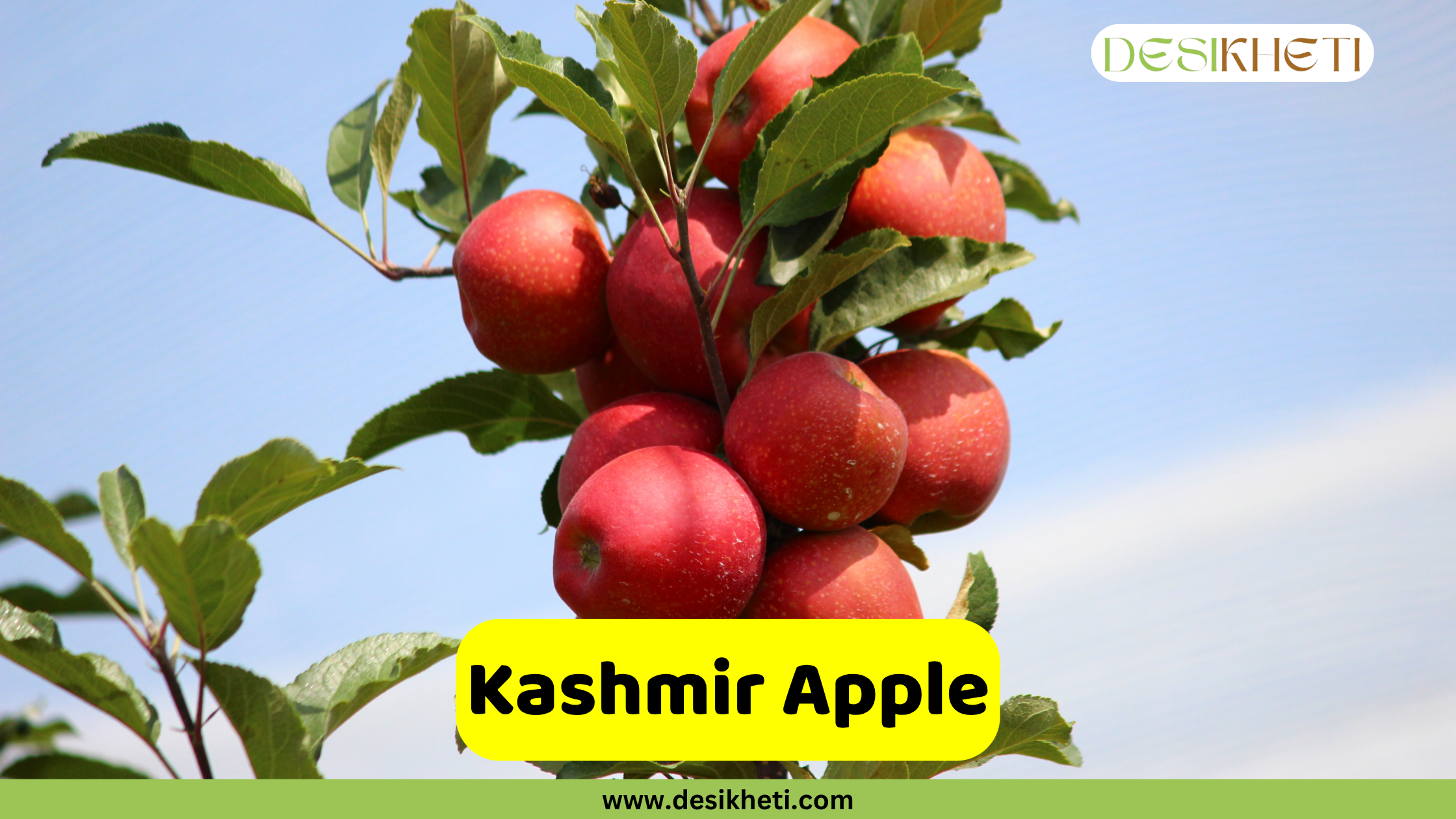
Kashmir Apple, locally known as Ambri Apple, is native to the lush valleys of Jammu & Kashmir. It is one of the oldest apple varieties cultivated in India and is often referred to as the “Pride of Kashmir.”
These apples are medium to large in size, with a greenish-yellow base and reddish blush or stripes. The skin is waxy and smooth, which helps extend shelf life. The inner flesh is cream-colored, firm, and dense, known for its mildly tangy and sweet flavor with a rich aroma. These apples are consumed fresh due to their juicy nature but also perform well in baking and cooking.
Uses & Benefits:
- Eaten fresh or in salads due to natural sweetness
- Suitable for baking (pies, tarts, compotes
- Used in jams, chutneys, and preserves
Shimla Apple

Shimla Apple, widely known as Himachali Apple, is cultivated in the cool highlands of Himachal Pradesh. These apples are easily recognized by their deep crimson to bright red skin, occasionally marked by green or yellow undertones. They are medium to large in size, with a glossy finish and firm white to pale cream flesh.
They are known for their crisp texture and sweet-tangy taste. Widely popular for both raw consumption and culinary uses, their balanced flavor and firm structure make them suitable for baking and preserving.
Uses & Benefits:
- Consumed fresh or in fruit salads
- Used in pies, tarts, and crumbles
- Suitable for juices, jams, chutneys, and preserves
Royal Delicious Apple
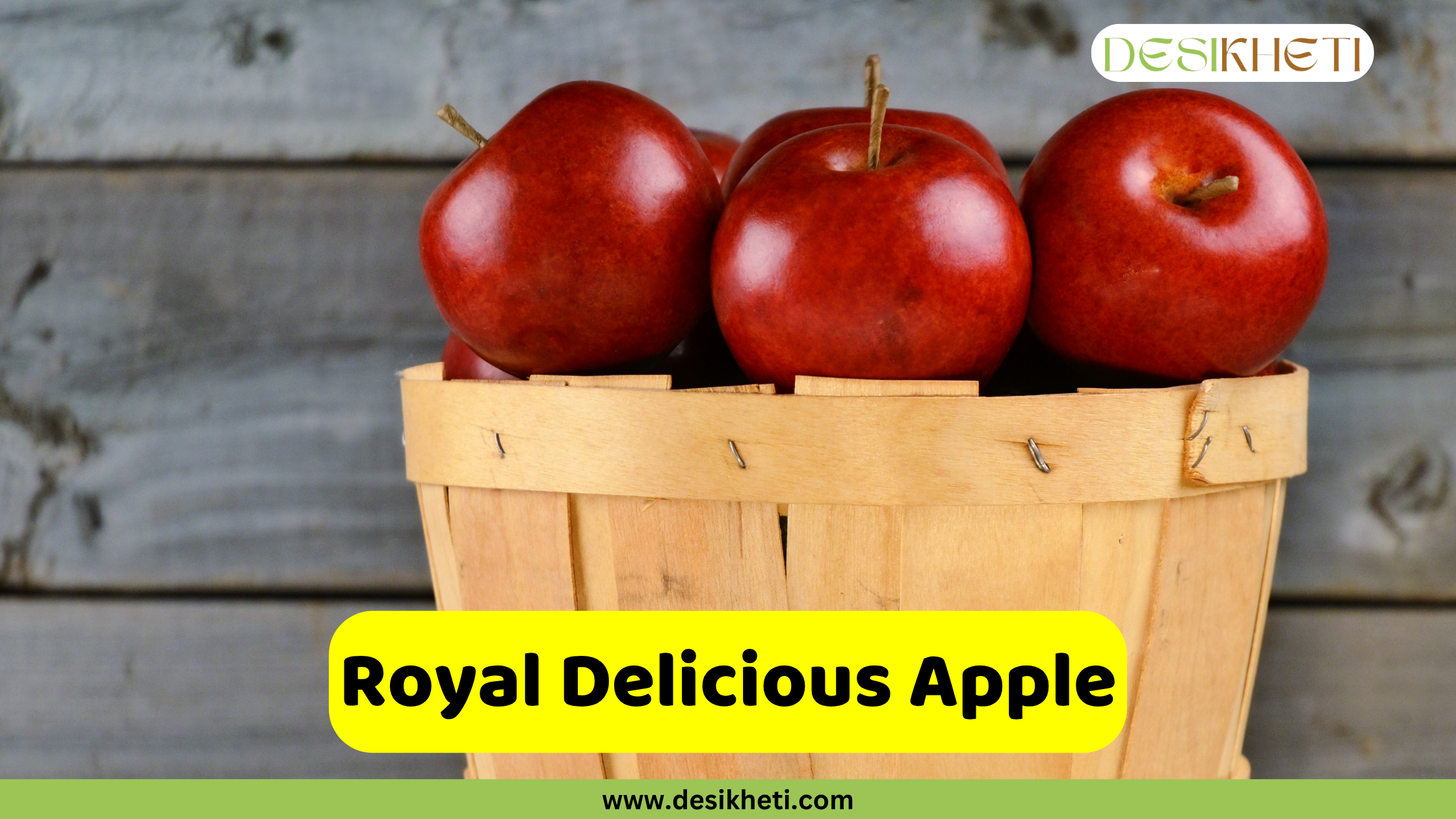
Royal Delicious Apple is one of the most widely grown apple varieties in India, particularly in regions like Himachal Pradesh and Jammu & Kashmir. It is a popular cultivar of the Red Delicious family and is known for its rich red color and appealing conical shape.
The fruit has a smooth, waxy skin with a bright red hue and occasional faint vertical stripes. Its flesh is cream-colored, crisp, and slightly juicy. Royal Delicious apples offer a mild sweetness with low acidity, making them pleasant for fresh consumption. They are best enjoyed raw as table fruit due to their subtle flavor and firm bite.
Uses & Benefits:
- Ideal for fresh consumption
- Can be added to fruit salads or used as garnish
- Rich in dietary fiber and antioxidants
Granny Smith Apple
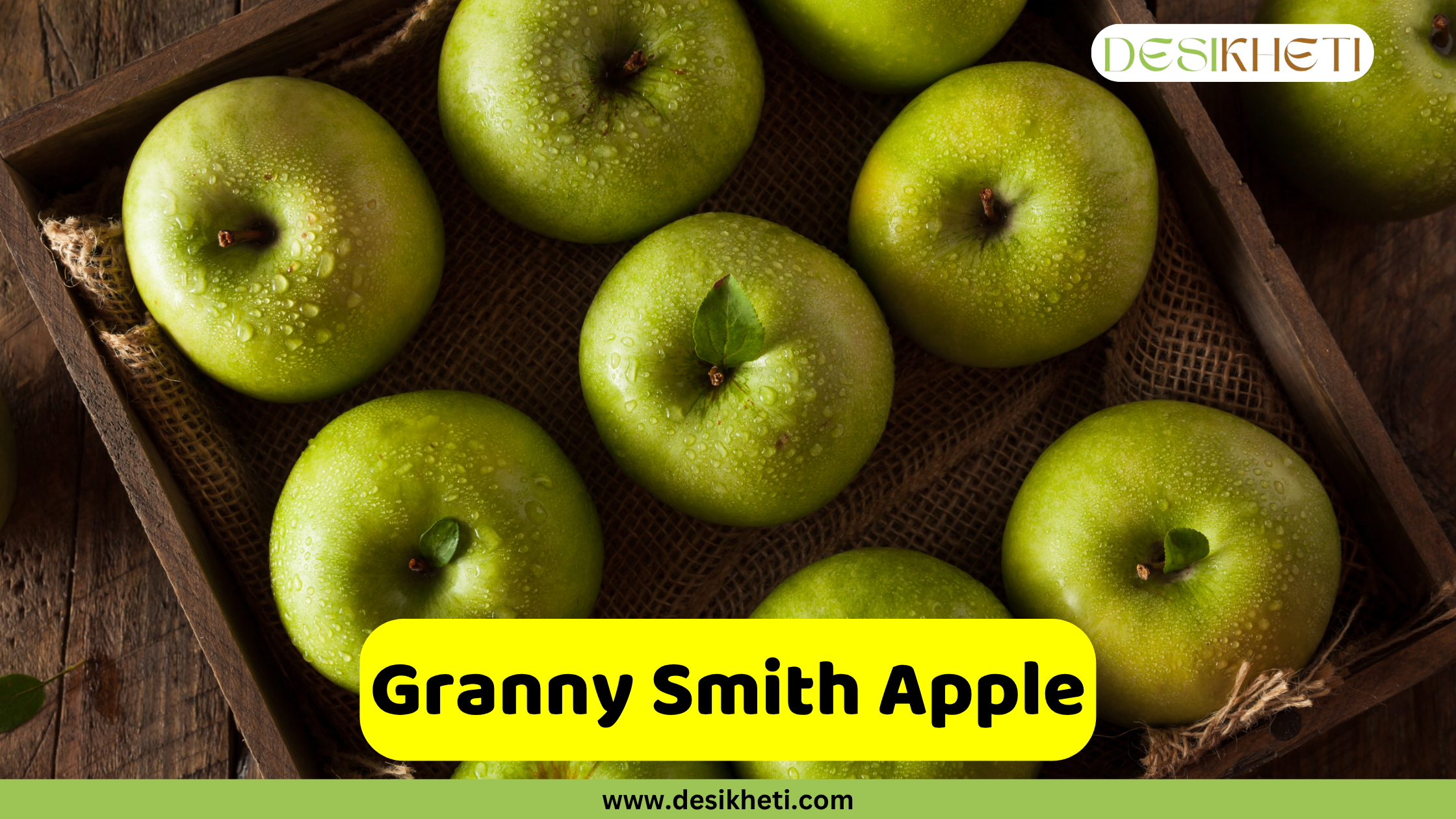
Granny Smith Apple is known globally for its bright green skin and tart flavor. The apple has a smooth, glossy surface with dense white flesh and a firm bite. Its tangy flavor makes it a favorite for baking, especially in pies and crumbles, as it retains its shape well. It also pairs well with savory items like cheese or meat dishes.
Uses & Benefits:
- Used in pies, tarts, and baked goods
- Excellent in savory recipes and salads
- Great for juices, chutneys, and preserves
Red Delicious Apple
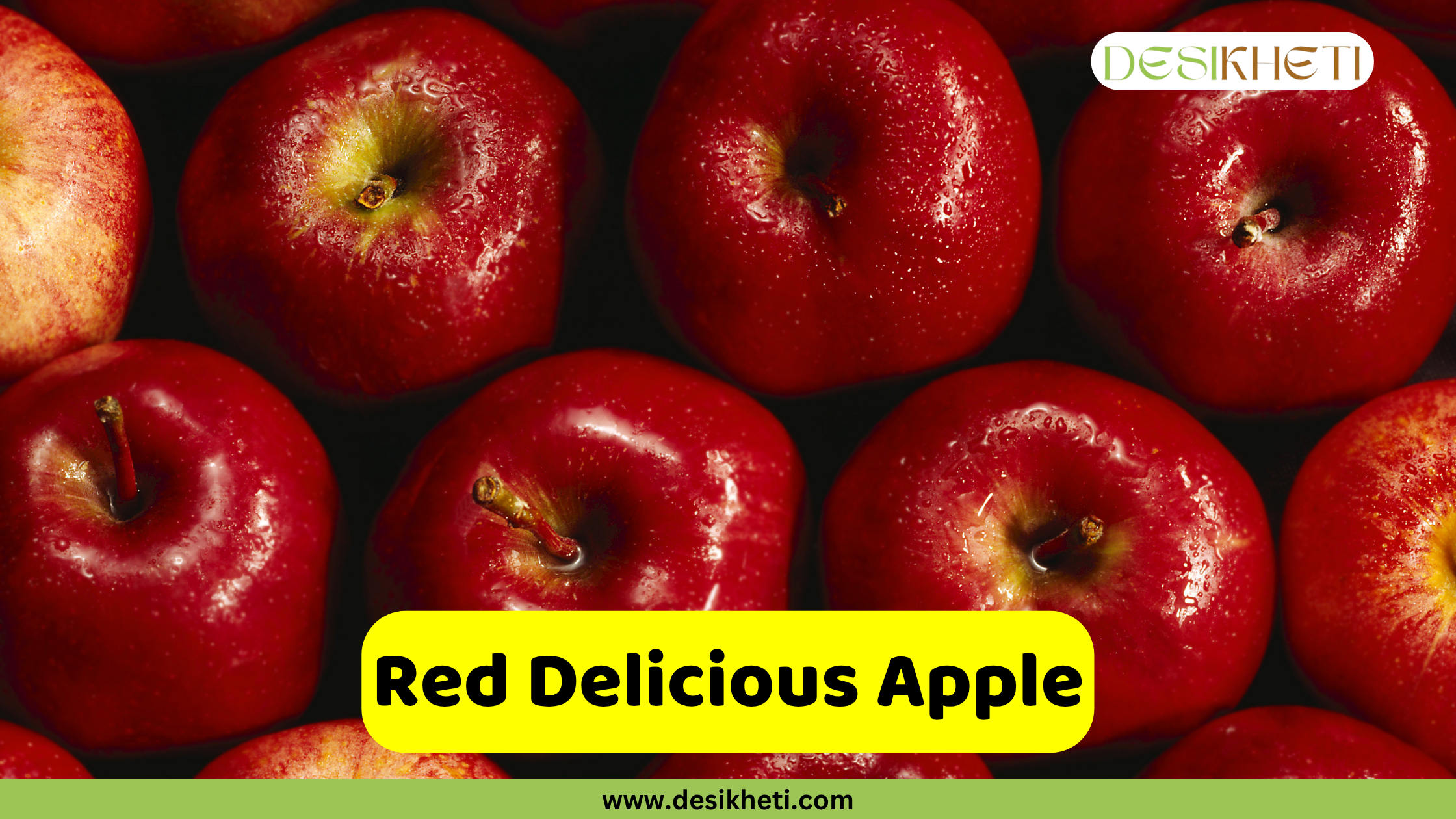
Red Delicious is a classic variety, famous for its deep red color and tall, conical shape. It originated in the USA and is now widely grown in Indian apple belts. The apple has thick, glossy skin and pale yellow, crisp flesh. While not ideal for cooking due to its soft texture under heat, Red Delicious is best enjoyed fresh and is a visual favorite in fruit displays and lunchboxes.
Uses & Benefits:
- Ideal for raw consumption and fruit salads
- Often used in decorative platters
Fuji Apple
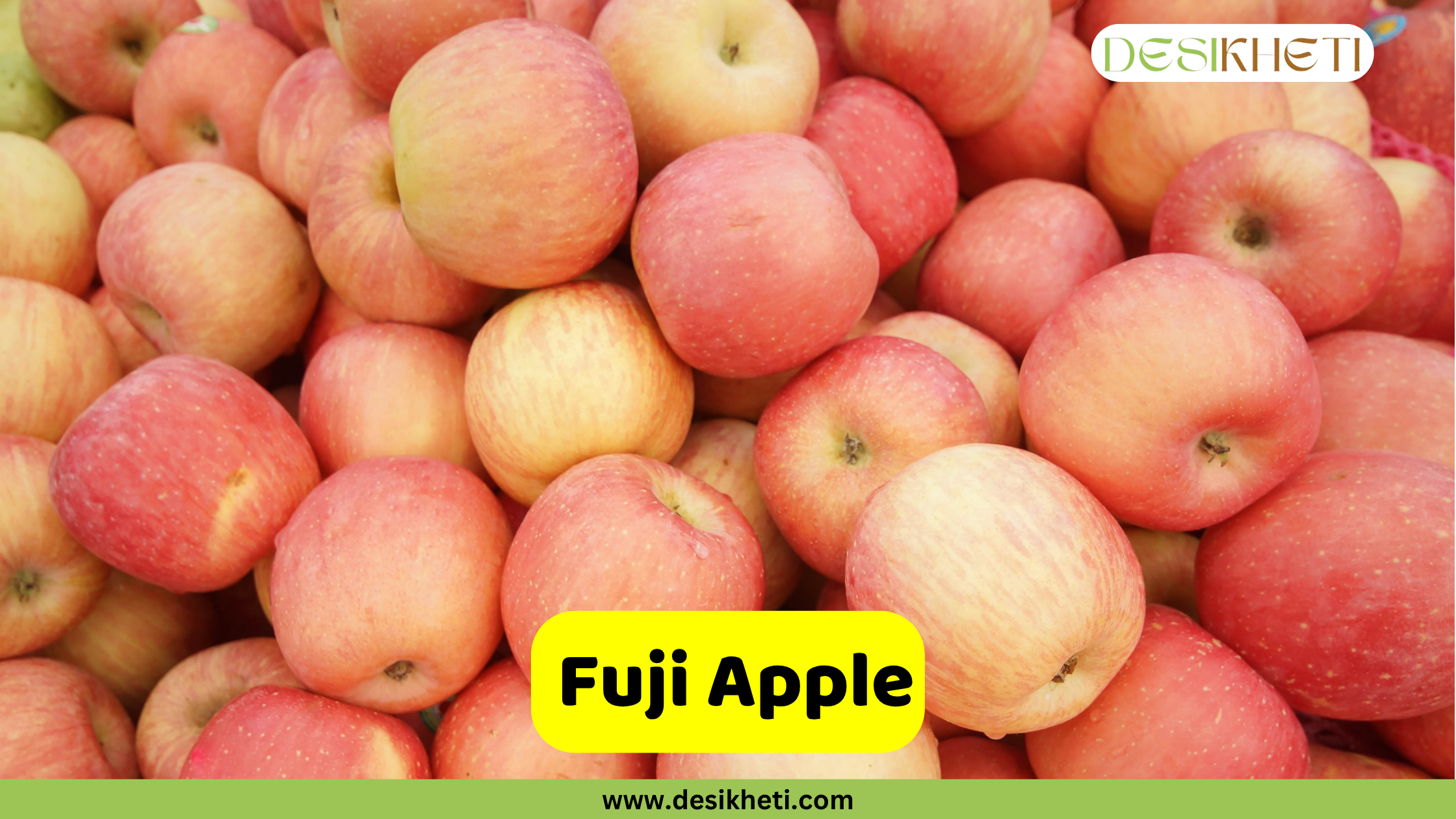
Fuji is a Japanese cultivar, developed in the late 1930s and released in the 1960s. It is a hybrid of ‘Red Delicious’ and ‘Ralls Janet’, both American apples. These apples are large, firm, and vibrant, with a red and pink blush on a yellow-green background.
They are incredibly sweet, with dense, creamy white flesh that is great for baking, roasting, and juicing. Their natural sugar content makes them perfect for desserts and caramelized dishes.
Uses & Benefits:
- Eaten raw, in juices, and smoothies
- Ideal for caramelized recipes and baking
- Great for making applesauce and crisps
- Long shelf life
Gala Apple
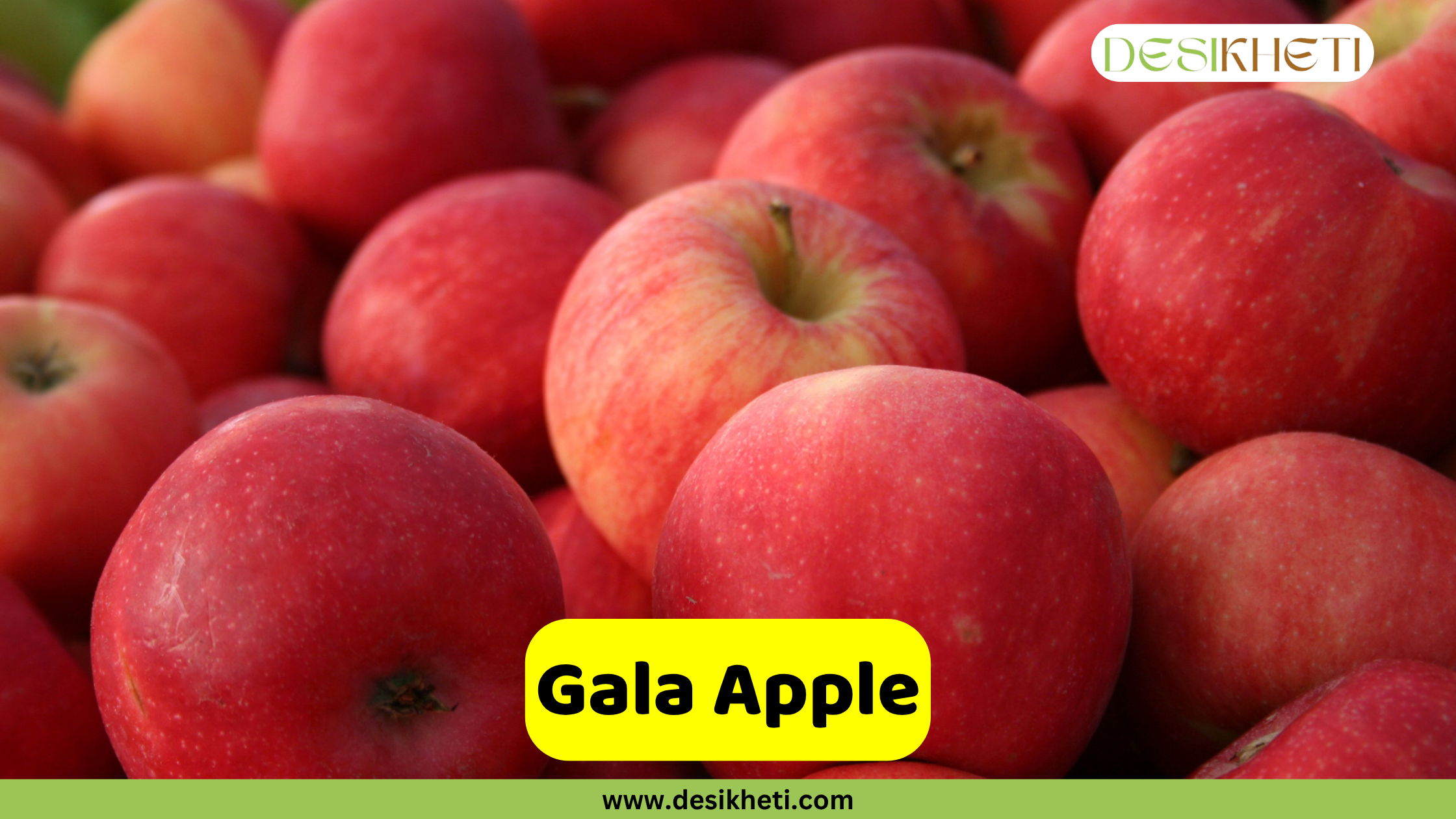
Gala Apple, also known as Royal Gala, is cultivated in Indian highlands. This variety is medium-sized with red, pink, and orange-striped skin over a yellow base. The flesh is crisp, creamy yellow, and sweet. It has a mild and floral sweetness, low acidity, and high juiciness, making it perfect for fresh consumption and light desserts.
Uses & Benefits:
- Perfect for eating fresh
- Used in applesauce, cakes, and chutneys
Golden Delicious Apple
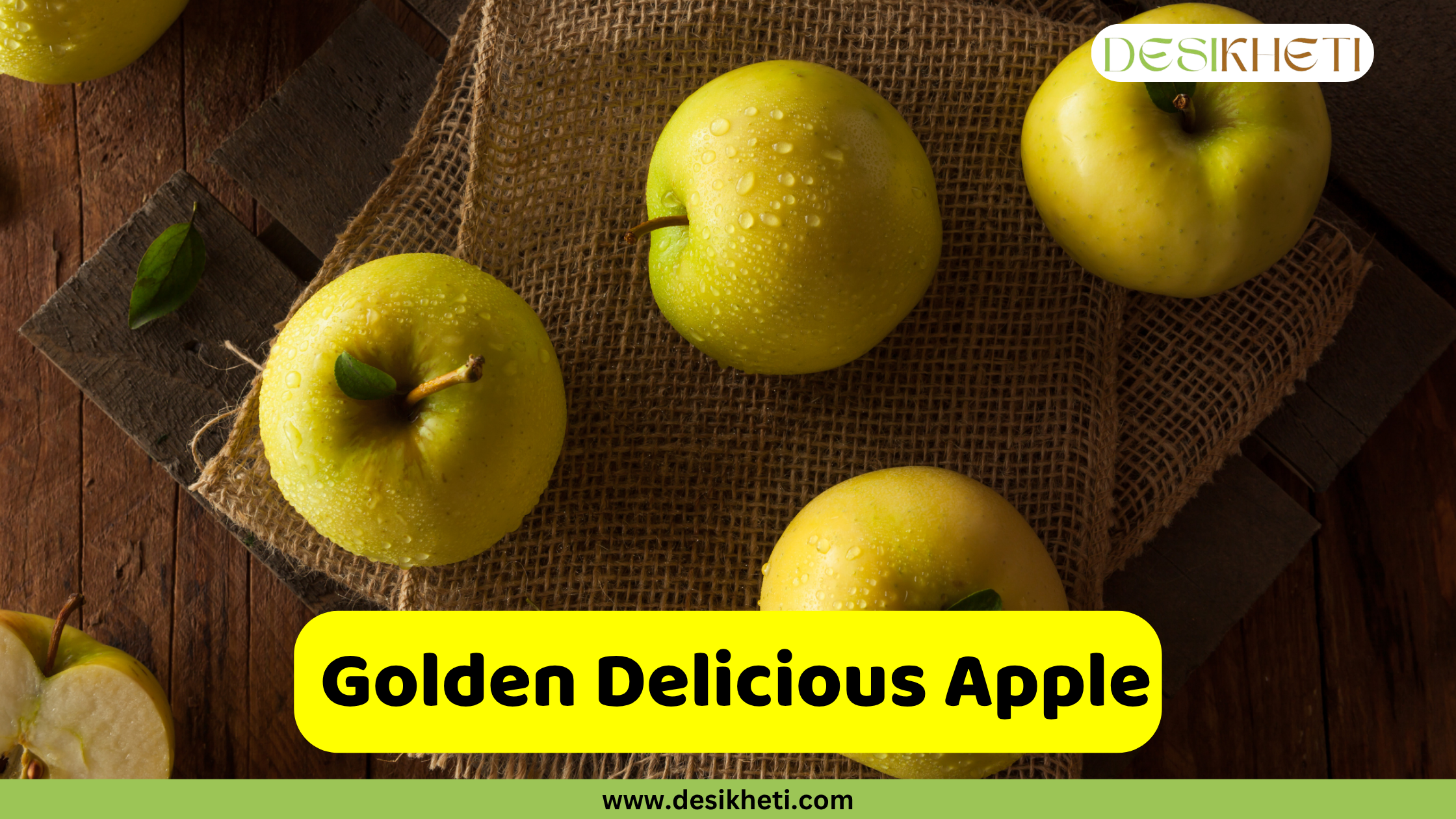
Golden Delicious has golden-yellow skin and a sweet, mild flavor. It is grown in India’s apple-producing states. It has a balanced texture and low acidity, making it extremely versatile. It is excellent for both sweet and savory dishes, pies, sauces, and salads.
Uses & Benefits:
- Great for pies, crisps, and sauces
- Used in fruit salads and savory pairings
Tydeman’s Early Apple
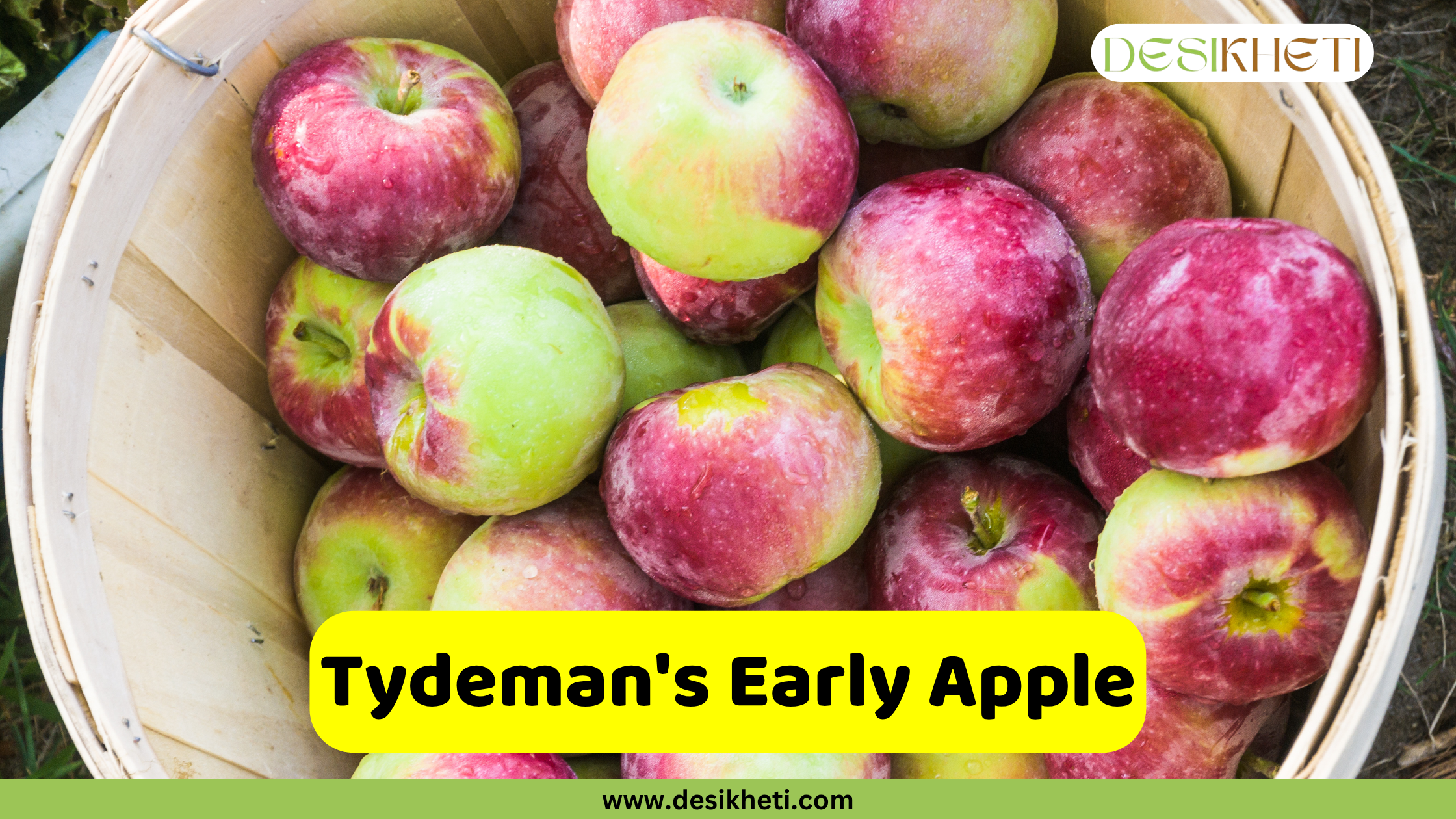
Tydeman’s Early is an early-season apple variety developed in the UK and adapted to Indian hill regions like Himachal Pradesh. It is appreciated for its refreshing taste and quick maturity.
The fruit is medium-sized with a yellow-green base and a red blush covering most of its surface. The skin is thin, and the flesh is soft, juicy, and finely textured. It has a sweet-tart flavor with mild acidity, making it enjoyable for fresh eating. Due to its early harvest, it is often among the first apples to reach the market during the season.
Uses & Benefits:
- Great as a fresh table fruit
- Can be used in jams and jellies
- Ideal for school snacks and quick desserts
Mutsu Apple
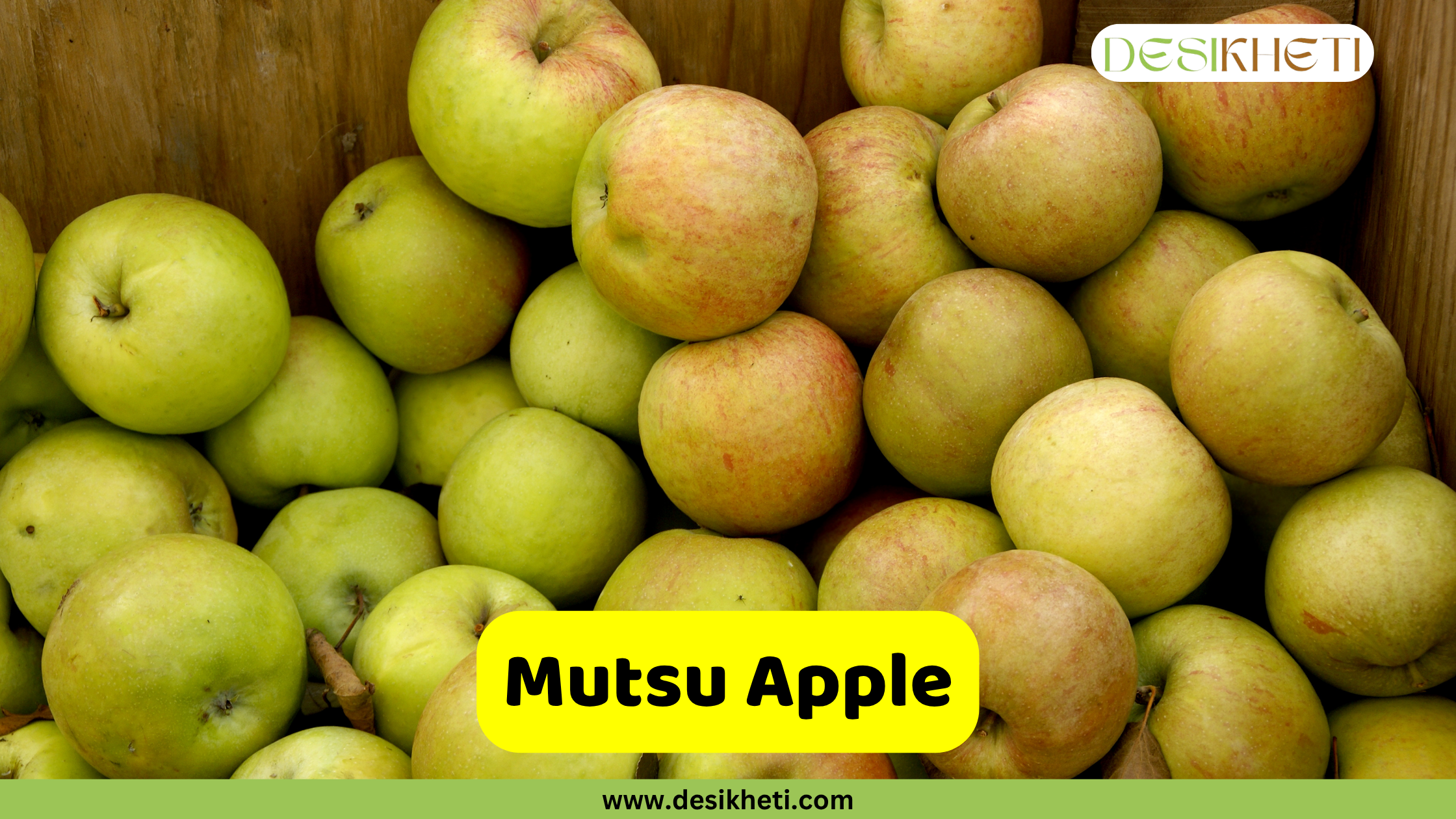
Mutsu, or Crispin, is a large greenish-yellow apple. It offers a crisp bite and a subtle sweet-tart flavor, often with hints of citrus. This variety performs well in baking and cooking and is equally delicious when eaten raw.
Uses & Benefits:
- Ideal for baking and desserts
- Used in salads and juices
- Long storage life
Fun Facts About Apples
- Unlike many fruits, apples continue to ripen even after being picked, thanks to a natural gas called ethylene that they produce, which speeds up the ripening process.
- The wild ancestors of modern apples were actually quite bitter and sour. Centuries of selective breeding have transformed them into the sweet and delicious varieties we enjoy today.
- The satisfying crispness of an apple comes from the structure of its cells, which are filled with fluid under pressure. When you bite into an apple, the cells rupture creating that signature crunch sound.
- In 1995, apples were among the first fruits taken aboard the Space Shuttle Endeavour as part of experiments on growing food in space.
Apple Growing Care and Tips
- Climate and Location: Apple trees thrive in temperate to sub-temperate regions. Ideal temperatures range from 21°C to 24°C during the growing season. The best apple-growing states in India include Himachal Pradesh, Jammu & Kashmir, Uttarakhand, and parts of Arunachal Pradesh and Nagaland. Choose well-drained, loamy soil with a pH of 5.5 to 6.5 and good sun exposure.
- Planting Time and Spacing: Plant apple saplings during the dormant months (December to February) in hilly regions. Use a spacing of 12–15 feet between trees in rows, ensuring proper air circulation and sunlight.
- Irrigation Management: Apples require regular watering, especially during flowering and fruit-setting stages. Avoid overwatering, as it can cause root rot. Drip irrigation is ideal for maintaining soil moisture without waterlogging.
- Pruning and Training: Annual pruning helps develop a strong framework, improve air circulation, and enhance fruiting. Use central leader or modified central leader training systems to maintain tree shape and manage canopy height.
- Pollination and Fruit Set: Apples are partially self-incompatible, so plant at least two to three pollinator varieties in the orchard to ensure cross-pollination. Bees and other insects play a key role in effective pollination.
- Fertilization: Apply organic manure and well-balanced NPK fertilizers based on the tree’s age and soil condition. Micronutrients like boron, zinc, and calcium are also important for proper fruit development and for preventing disorders like bitter pit.
- Pest and Disease Management: Common apple pests include woolly aphids, codling moths, and red spider mites, while common diseases include apple scab, powdery mildew, and fire blight. Use integrated pest management (IPM), conduct regular monitoring, and apply organic or recommended chemical sprays as needed.
- Harvesting and Storage: Apples are typically harvested 120 to 150 days after full bloom. Pick fruits when they are firm, have developed full color, and emit a fruity aroma. Store them in a cool, dry place or in cold storage at 0°C–4°C to prolong shelf life.
Whether you prefer the mildly sweet Ambri, the crisp and juicy Honeycrisp, or the tart Granny Smith, there’s an apple for every palate and purpose. Some are perfect for eating fresh, while others are ideal for baking, juicing, or making preserves.
Mention your favorite apple variety in the comments below.
FAQs on Apples
1. What is special about Kashmiri apples?
A. Kashmiri apples are known for their intense flavor, crisp texture, and rich aroma, making them a premium fruit in India.
2. Where did the Ambri apple come from?
A. The Ambri apple originated in the Kashmir region of India and is one of the oldest known apple varieties in the country.
3. What are the benefits of Kashmiri green apples?
A. Kashmiri green apples are rich in antioxidants, dietary fiber, and vitamin C, which help boost immunity and improve digestion.
4. What do Shimla apples taste like?
A. Shimla apples are sweet with a slight tang, offering a juicy and crisp texture that’s widely appreciated.
5. In which season are apples grown in Himachal Pradesh?
A. Apples in Himachal Pradesh are typically grown during the summer season and harvested between July and October.
